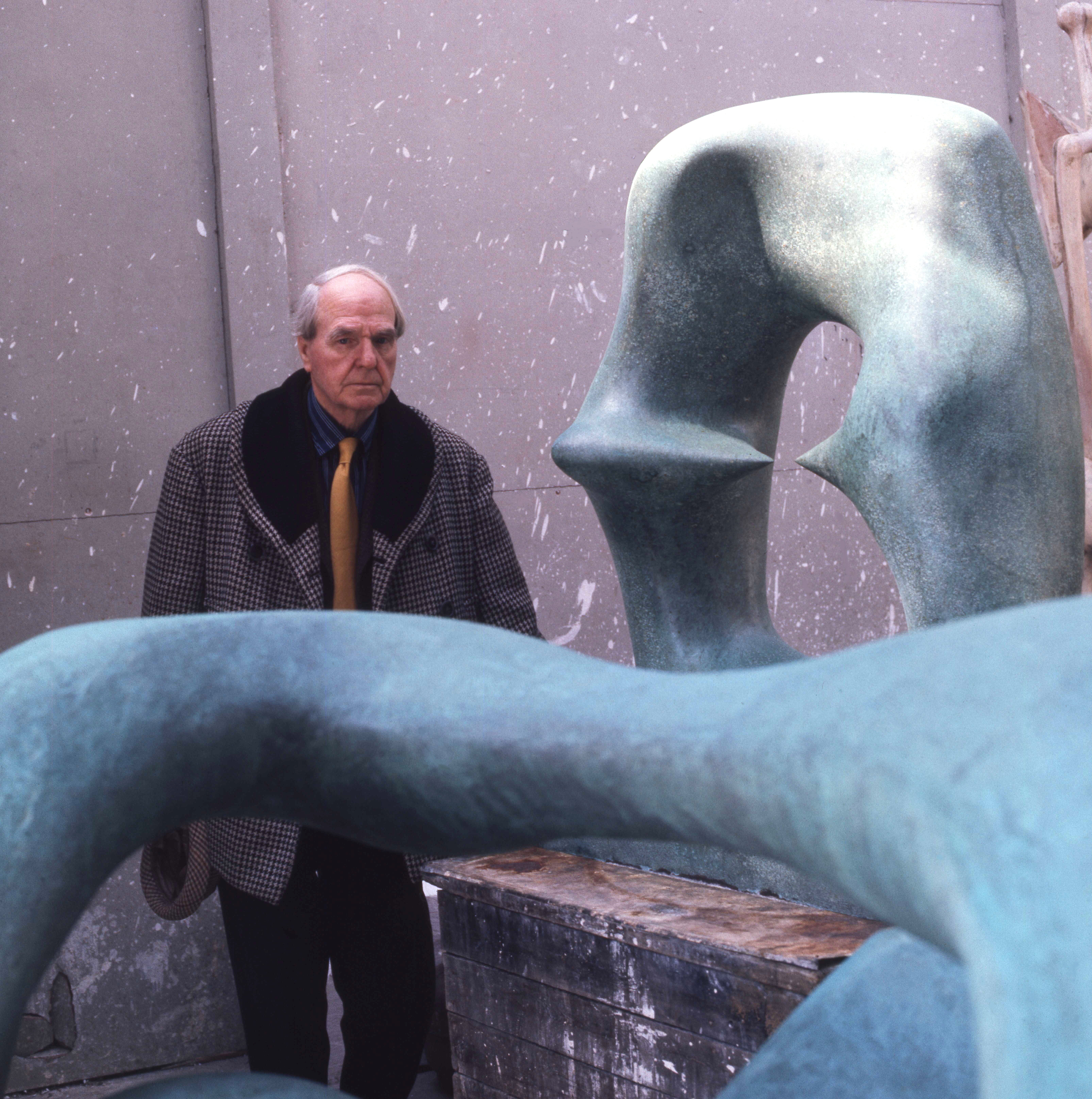1970 and later
Source: Eric Maisel, Ann Maisel (2010) Brainstorm: Harnessing the Power of Productive Obsessions. p. 95
Henry Moore: Citations en anglais
Source: 1925 - 1940, The sculptor speaks' (1937), pp. 254-255
Quote in 'The Listener', 13 November 1941, pp. 657-9; as cited in Henry Moore writings and Conversations, ed. Alan Wilkinson, University of California Press, California 2002, p. 126
1940 - 1955
Quote in 'Unpublished notes' 1951, HMF Archive; as cited in Henry Moore writings and Conversations, ed. Alan Wilkinson, University of California Press, California 2002, p. 121
1940 - 1955
Henry Moore, Sir Herbert Edward Read, David Sylvester (1957) Henry Moore: 1921-1948, p. xxxi
1955 - 1970
Quote from Moore's letter, (15 Jan. 1955); as cited in Henry Moore on Sculpture: a Collection of the Sculptor's Writings and Spoken Words, ed. Philip James, MacDonald, London 1966, p. 250
1940 - 1955
Quote of Henri Moore in his interview with David Silvester, in 'The Sunday Times Magazine', 16 Febr. 1964, pp. 18, 20-22
1955 - 1970
critic on the idea of pure Abstract art by Moore
1940 - 1955
Source: 'Unpublished notes' for 'Art and Life', 1941, HMR Archive; as quoted in Henry Moore writings and Conversations, edited by Alan Wilkinson, University of California Press, California 2002, p. 114
Quote of Moore from his text 'The sculptor speaks' (1937), p. unknown
1925 - 1940
in 'Partisan Review', New York, March-April 1947
1940 - 1955
Quote of Moore, 1978; as cited in Henry Moore writings and Conversations, ed. Alan Wilkinson, University of California Press, California 2002, pp. 32-33
1970 and later
Quote in 'The Listener', 13 November 1941, pp. 657-9; as cited in Henry Moore writings and Conversations, ed. Alan Wilkinson, University of California Press, California 2002, pp. 126-27
1940 - 1955
“What is a cave? A cave is a shape. It’s not the lump of mountain over it.”
Quote from: 'Henry Moore's World', Carlton Lake, 'Atlantic Monthly' Bonston, Jan. 1962 p. 45
1955 - 1970
Quote from 'Henry Moore', an interview by Donald, in 'Horizon', New York, Nov. 1960
1955 - 1970
Quote of Moore in 'Partisan Review', New York, March-April 1947
1940 - 1955
Quote of Henri Moore in 'Unpublished notes', c. 1925-1926, HMF archive; as cited in Henry Moore writings and Conversations, ed. Alan Wilkinson, University of California Press, California 2002, p. 96
1925 - 1940
Source: 1925 - 1940, Unpublished notes' for 'The Sculptor Speaks' (1937), p. 113
Quote from The Donald Caroll interviews, Talmy Franklin, London 1973, p. 377
1970 and later
Elizabeth Day, "The Moore Legacy," http://www.guardian.co.uk/artanddesign/2008/jul/27/1 The Observer (2008-07-27),
Henry Moore is quoted here by Mary Moore, the artist's niece
1970 and later
Quote of Moore in 'Conversations with Henri Moore', J.P. Hodin, in 'The Observer', 24 Nov. 1958
1955 - 1970
Quote in 'Conversations with Henri Moore', J.P. Hodin, in 'The Observer', 24 Nov. 1958
1955 - 1970
Source: 1925 - 1940, The sculptor speaks' (1937), p. 251
Source: 1925 - 1940, The sculptor speaks' (1937), p. 253
1970 and later
Source: The Donald Caroll interviews, Talmy Franklin, London 1973, p. 378
Quote of Henri Moore in 'The Listener', 24 April 1941, pp. 598-9; as cited in Henry Moore writings and Conversations, ed. Alan Wilkinson, University of California Press, California 2002, p. 104
1940 - 1955
Source: 1925 - 1940, The sculptor speaks' (1937), p. 255
Source: 1925 - 1940, Unpublished notes' for 'The Sculptor Speaks' (1937), p. 123
1970 and later
Source: 'The Sunday Times', 25 May 1975; as quoted in Henry Moore writings and Conversations, ed. Alan Wilkinson, University of California Press, California 2002, p. 121
1955 - 1970
